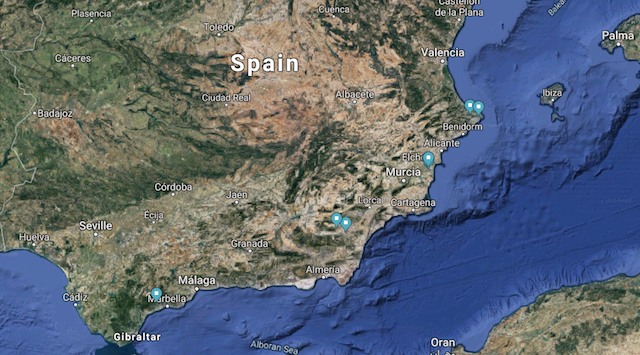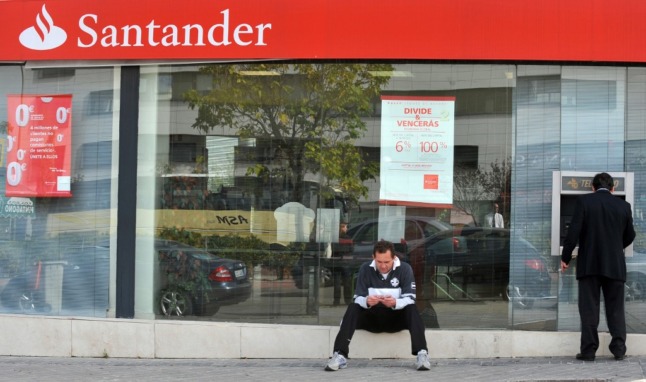Whether it’s because of the allure of having a home away from home in the sun, the difficulties in learning Spanish in old age, or simply a preference for life in a British community, there are towns in Spain that are very much Little Britains.
Some may object to this expat philosophy, but the truth is that it’s done a lot more good than harm for Spain as a whole.
British retirees, who tend to be the ones who group together the most, pump money into often forgotten rural parts of Spain, create jobs and revitalize ailing property markets.
The Spanish government realises that, and with Brexit worrying many of these British ‘colonies’, Pedro Sanchez’s promise on March 1st to guarantee their rights in Spain has put many minds at rest.
Before we look out at these British strongholds where getting Bovril is easier than finding butifarra, here are some interesting stats.
READ ALSO:
Brits in Spain: 'We pay our taxes and want to integrate'
In 2018 Spain estimated there were 300,000 Brits officially registered as residents in the country, although the numbers have dropped by almost 50,000 in 2019.
According to Spain’s national stats agency INE, the two autonomous regions with the most Brits are Andalusia, where they number almost 77,000, and the Valencia region, where there are 78,422.
Trailing behind are the Canaries (25,500 British residents), Catalonia (20,350) and the Balearics (14,870).
To narrow it down even further, the three provinces with the most resident Britons are Alicante with 69,289, Málaga with around 47,000 and Almería with roughly 15,000.
By contrast, in Spain’s capital Madrid there are only 10,000 British residents.
But the real surprise is that there are a couple of dozen towns and villages where Brits, often retirees, outnumber the locals.
As the following map shows, the towns and villages with the highest percentage of British residents are in Spain's Valencia region and north eastern Andalusia. Three of these 'British' municipalities in Alicante province are within walking distance of each other.
 Photo: Google Maps
Photo: Google Maps
Here are the eight most British municipalities in Spain:
Poble Nou de Benitachell (Alicante)
A coastal town with a British international school, the town’s population is 60 percent foreign, half of whom are British.

Photo: Joan Banjo/Wikipedia
Benahavís (Málaga)
This inland municipality between Marbella and Estepona is 64 percent foreign, 40 percent of whom hail from the British Isles. Photo: Deposit Photos
Photo: Deposit Photos
San Fulgencio (Alicante)
British retirees make up roughly a third of this town’s 8,000-strong population.
Daya Vieja (Alicante)
Just a kilometre from San Fulgencio lies this quaint village where sixty percent of its 430 foreigners are Brits.
 Photo: Abelardo Lopez Palacios/Wikimedia
Photo: Abelardo Lopez Palacios/WikimediaLlíber (Alicante)
729 of its 1,051 residents, 70 percent of which are British and 18 percent German.
 Photo: Joan Banjo/Wikimedia
Photo: Joan Banjo/Wikimedia
Rojales (Alicante)
68 percent of it’s 16,560 residents are foreign (11,283), half of whom are over the age of 65. The vast majority are British, as seen in this photo watching Prince Wiliam and Kate Middleton's wedding in 2011.
 Photo: AFP
Photo: AFP
Partaloa (Almería)
Eight out of every ten residents of the Andalusian municipality are British, almost half of whom are over the age of 65.
 Photo: 19Tarrestnom65/Flickr
Photo: 19Tarrestnom65/Flickr
Arboleas (Almería)
An incredible 83 percent of the 3,054 people registered in this small inland municipality 20km from the Almería coast are British. Photo: Luis Alfonso Fernández/Wikipedia
Photo: Luis Alfonso Fernández/Wikipedia





 Please whitelist us to continue reading.
Please whitelist us to continue reading.
Member comments